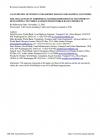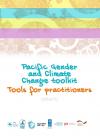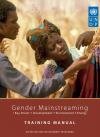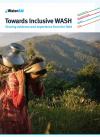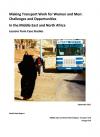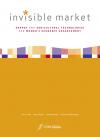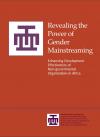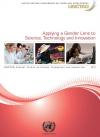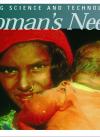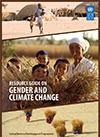Resources
22 Feb 2017
World Bank, 2015: Study illustrates the extent to which energy subsidy reforms in the Europe and Central Asia regions differently impact men and women, and seeks to understand
whether gender-specific behavioral change and corresponding mitigation measures would help men and women better adapt to these reforms.
REGIONS: Central and South Asia, Other
TYPE: Case studies, Reports
27 Oct 2016
John Riverson, Mika Kunieda, Peter Roberts, Negede Lewi and Wendy M. Walker, 2005: Paper describes steps which are being taken by the World Bank to improve the effective meeting of gender needs in transport, summarizing examples of good practice and illustrating their application
in Ethiopia.
REGIONS: Sub-Saharan Africa
23 Sep 2016
SPC, SPREP, et al., 2015: Toolkit is designed to support climate change practitioners in the Pacific islands region to integrate gender into their programmes and projects, aimed at climate change professionals working in national governments,NGOs, regional and international organisations who are involved in managing and implementing climate change programmes.
.
TYPE: Case studies, Toolkits
22 Sep 2016
IUCN/ENERGIA: Compilation of materials intended as a tool to help women understand different energy technology concepts, the variety of technologies available to them, and how choice of technology can be affected by social or gender relations, among others. They offer information to
assist women to make informed decisions about technology.
22 Sep 2016
UNDP, 2007: Manual examines environment and energy development projects, policies and decision-making processes from a gender perspective. Written for UNDP staff working with national counterparts in governments and NGOs, it can also be used by other development practitioners working in the field of environment and energy.
21 Sep 2016
WaterAid with support of Australian Agency for International Development, 2012: Report examines case studies of several groups and shows ways in which people secure their
rights to sanitation and water in countries around the world, including understanding the barriers that they face and how to design interventions to eliminate these barriers.
16 Sep 2016
World Bank, 2011: Four case studies conducted in Casablanca, Morocco, Sana’a and rural
Yemen, and the northern part of the West Bank in Palestine aim to help fill the gender data gap by increasing
understanding of the ways in which transport services are facilitating or constraining women’s access to resources,
markets, training, information, and employment.
REGIONS: Arab Region
TYPE: Case studies, Reports
12 Sep 2016
Gender and Water Alliance/UNDP, 2006:
Compilation of newer resources – documents, papers, books, case studies, tools and toolkits – on gender mainstreaming in Integrated Water Resource Management (IWRM) to assist water and gender practitioners and professionals as well as persons responsible for gender mainstreaming
09 Sep 2016
International Center for Research on Women (ICRW), 2012:
Research explores what it takes for technology initiatives, specifically in the energy and agricultural sectors, to reach and economically benefit women in developing countries through market-based strategies that have the potential for achieving scale and financial sustainability
TYPE: Case studies, Reports
01 Sep 2016
Women in Global Science and Technology (WISAT), 2012-ongoing:
Data analysis project that studies the representation of women in national knowledge economies, with studies currently completed in Argentina, Brazil, India, Indonesia, Mexico, South Africa, South Korea, and the US.
Read at All reports on WISAT website
31 Aug 2016
InterAction, 2005
Study examines the implementation and impacts of gender mainstreaming in sixteen African communities
REGIONS: Sub-Saharan Africa
TYPE: Case studies
31 Aug 2016
United Nations Conference on Trade and Development (UNCTAD), 2011
Report draws attention to the importance of applying a gender lens to STI policy and provides case studies on best practices in this area.
REGIONS: Sub-Saharan Africa
TYPE: Case studies
31 Aug 2016
AAAS for the Global Alliance for Diversifying the Science and Engineering Workforce, 2000
Booklet offers examples of how science, engineering, and technology intersect the critical issues articulated in the 1995 Platform for Action from the Women and NGO Forum in Beijing, China.
TYPE: Case studies
11 Aug 2016
Guide for practitioners and policy makers on the linkages between gender equality and climate change and their importance in relation to the achievement of the Millennium Development Goals, highlighting why it is important to include women in climate change policy and programming, and demonstrating how women’s contributions can strengthen the effectiveness of climate change measures
TYPE: Case studies





